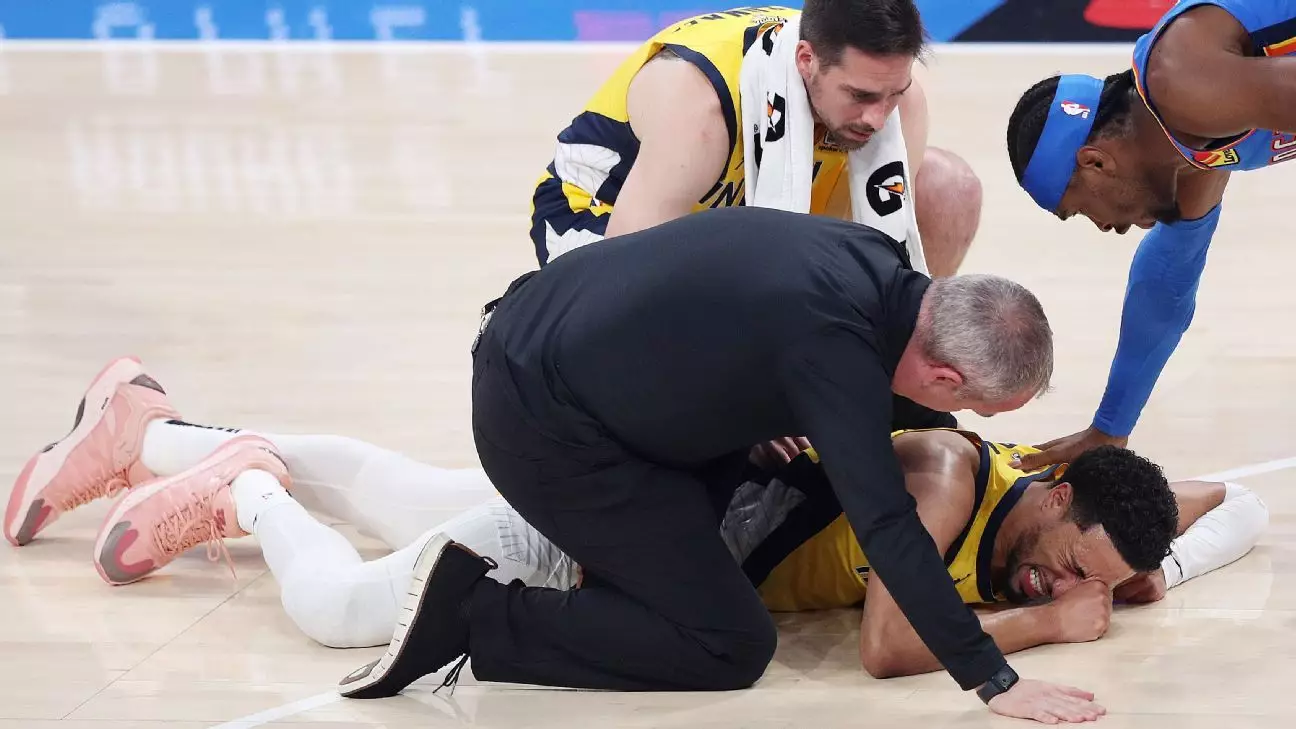In the realm of sports, few moments shatter the hopes of fans and teammates quite like the sight of a star athlete falling to the ground in agony. Such was the fate of Tyrese Haliburton, the Indiana Pacers’ shining beacon of hope, who tore his Achilles tendon during Game 7 of the NBA Finals. Not only did his injury derail the Pacers’ aspirations of clinching the championship, but it also serves as a stark reminder of the precariousness of athletic glory.
Fans witnessed Haliburton’s season culminate in an unwelcome twist of fate, a narrative as old as sports itself: the athlete who gives everything for victory, only to have fate deal a cruel blow. Playing through a calf strain, Haliburton embodied resilience and determination, famously saying, “If I can walk, I want to play.” Such statements echo the spirit of athletes who often push through pain as they chase the ultimate prize. However, this internal drive can lead to devastating consequences, as seen in the moment Haliburton collapsed, a silent scream of despair resonating in the arena.
The Emotional Toll
The emotional impact of Haliburton’s injury extends beyond the court. Coach Rick Carlisle expressed the sentiments of a devastated franchise, saying, “All of our hearts dropped.” This collective heartbreak is palpable; when stars are infected with misfortune, the entire community of fans shares in the sorrow. Unlike arbitrary injuries that fade into obscurity, this incident punctuates the fragility of sports loyalty—the kind of investment that fans surrender their emotions to, only to see it slip away.
In the moments following his injury, Haliburton symbolized the very essence of sport—a paragon of sacrifice. Surrounded by family and teammates, his vulnerability draws attention to a wider dialogue in professional athletics: at what cost does one chase greatness? With Haliburton scheduled for surgery and a likely absence from the entire next season, the repercussions extend far beyond the court. The Pacers’ chances of rebuilding their roster and maintaining competitiveness become increasingly complicated without their star.
A Statistical Marvel Crushed
As if the emotional devastation wasn’t enough, Haliburton’s statistical performance in the playoffs had already etched his name into the franchise’s history. With averages of 17.7 points and 9.0 assists, and standing as the record-holder for assists in a postseason, he was not merely a player; he was a player of mythic potential. Those numbers reflect not just individual prowess but the very possibility of what the Pacers could achieve as a franchise. Haliburton’s playoff success epitomized the hope that future championships were within reach.
Yet, as time ticks forward, what might have been becomes a lament. The fractures in athletic careers usually lead to questions about recovery timelines, future contracts, and the sustainability of talent—a reflection of the dark side of a sport that thrives on physicality. The conversation now shifts from celebrating a prodigious talent to contemplating a future that may forever be altered by an injury sustained in the pursuit of greatness.
In the face of such heart-wrenching news, the Pacers, their supporters, and the basketball community must grapple with the fragility of their dreams. Here stands an athlete, not just sidelined but in search of redemption, a fight not merely against injuries but against a narrative that seeks to define him by this single moment of misfortune.

